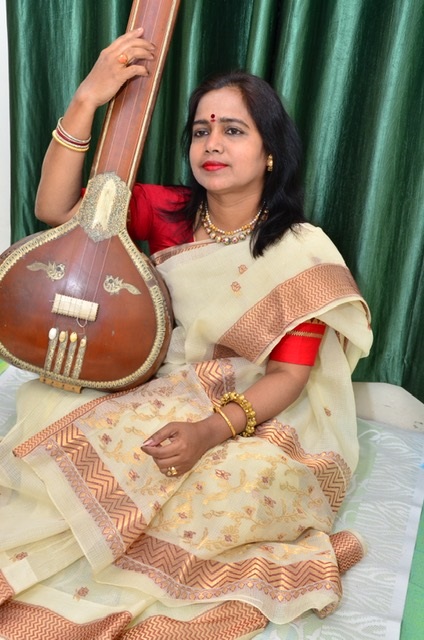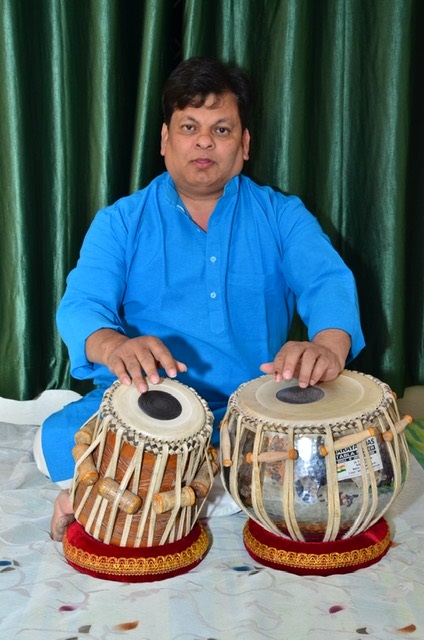Contribute
|
The Art Of Singing Poorab Ang Thumri From Benaras Interview With Hindustani Vocalist Smt. Rupan Samanta And Tabla Maestro Pandit Uddalak Samanta |
Shuchita Rao
06/05/2019
Interview with Hindustani vocalist Smt. Rupan and Tabla maestro Pandit Uddalak Samanta
Hindustani vocalist Smt. Rupan Samanta trained for more than a decade with PadmaBhushan, the late Vidushi Smt. Girija Devi. Vidushi Girija Devi was not only an expert at singing genres such as Khyal, Tappan and Tarana which are considered part and parcel of Hindustani Classical music but also specialized in singing semi-classical music of Benaras –the music of “Poorab Angâ€.
Rupanji, can you tell us about your early training in music?
My father loved music and wanted me to learn from a good Guru. He took me to Vidushi St. Girija Devi in Benaras (lovingly referred to as Appaji) with the request that she should teach me. Appaji told him that she could teach me if I gave her away to him. My father readily agreed and my lessons began with Vidushi Girija Devi in the Guru-Shishya Parampara.
You ask an important question. Appaji was the first and foremost artist who gave high status and class to the art of thumri singing. When teaching me, she would ask me to pay special attention to the poetry and lyrics of the verses. She urged me to understand that it was not just about repeating the word Shyam – Shyam over and over again. It was about understanding what Shyam was doing in the poem and then singing in a manner that brought out the beauty of the poetry. This was the special quality of Appaji’s singing that made the audience want to listen to her songs. This is what made her music “classyâ€.
What are the common themes addressed in thumri lyrics?
Are there many types of thumris? What is the main difference between bol-banaav and bandish ki thumri?
Yes. There are many different types of thumris. Bol Banaav, Bandish Ki Thumri, Holi ki thumri and many many other types of thumris. There are also several different types of Holi. Bandish ki thumri is like singing chota khyaal but in contrast to the khyal which focuses on just one raga, we add related ragas while elaborating and developing the melodic content of thumri. A little alaap is sung in thumri too but it is done in a manner that flows with the rhythm. “Bol banaav†is like how we speak on a daily basis. Comes from the word boli (spoken language). There is more resting (thehraav) in Bol banaav than in Bandish ki thumri. We create many different ways of phrasing the words, varying the tunes slightly for the same set of words.
There are only two main gharanas of thumri singing – Benaras and Punjab. Poorab Ang thumri is practiced in Benaras. Since Benaras is a city of temples, Bhakti rasa or devotional sentiment is the main attribute of this gharana. Some attributes, best expressed in Hindi are Seedha (straight), asardaar (with powerful effect), chayandaari aur sukoon (relaxed manner of singing) and shaant (peaceful). Punjab Ang is more enthusiastic, (just as the people of Punjab are) and employs more ornaments like taan (fast melodic movement), khatka and murki (vibrato). They also sing Thumri in Dadra taal which Benaras folks don’t do.
What taals are used in Poorab Ang thumri singing?
Pre-dominantly Deepchandi and Jat taals are used for bol-banaav thumri. For bandish ki thumri, sixteen beat cycles, addha and teentaal are mostly used.
I was born into a family of genuine music connoisseurs. I initially learned music at the Bhatkhande College in Lucknow and earned a Vaadya-Nipun degree. I also earned a Masters degree in tabla from “Indira-Kala Sangeet Mahavidyalaya, Khairagarh.†I wanted to go beyond understanding music theory. I therefore approached Pandit Shankar Ghosh in Kolkatta for accepting me as a disciple. I learned for almost twelve years from him. Then, I wished to take up a job in Dehradun and my Guru gave me permission to move from Kolkatta to Dehradun. I visited him for two months in summer and two months in Winter every year to continue my training. Since the time he has passed away, I continue to carefully study what he taught me over twenty years of my training under him.
You may also access this article through our web-site http://www.lokvani.com/

